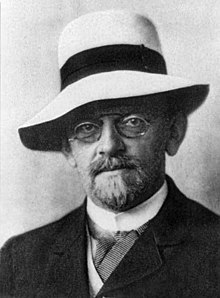The Hilbert space
A Hilbert space X, as abstractly defined by von Neumann, is a linear
strictly positive inner product space (generally over the field 3 of complex
which is complete with respect to the metric generated by the --
inner product and which is separable. Its elements are called uectors,
usually denoted by #, 9,. . . , and their inner or scalar product is denoted by
(cp,#), whereas the elements of 9 are called scalars and usually denoted by
a, b,. . . . In his work on linear integral equations (1904-1910) David Hilbert
had studied two realizations of such a space, the Lebesgue space C2 of
(classes of) all complex-valued Lebesgue measurable square-integrable
functions on an interval of the real line R (or R itself), and the space l2 of
sequences of complex numbers, the sum of whose absolute squares converges.
Impressed by the fact that by virtue of the Riesz-Fischer theorem
these two spaces can be shown to be isomorphic (and isometric) and
hence, in spite of their apparent dissimilarity, to be essentially the same
space, von Neumann named all spaces of this structure after Hilbert. The
fact that this isomorphism entails the equivalence between Heisenberg's
matrix mechanics and Schrodinner's wave - mechanics made von Neumann
aware of the importance of Hilbert spaces for the mathematical formulation
of quantum mechanics.
Reference: https://philosophy-of-sciences.blogspot.com/2018/12/the-philosophy-of-quantum-mechanics.html
Reference: https://philosophy-of-sciences.blogspot.com/2018/12/the-philosophy-of-quantum-mechanics.html




No comments